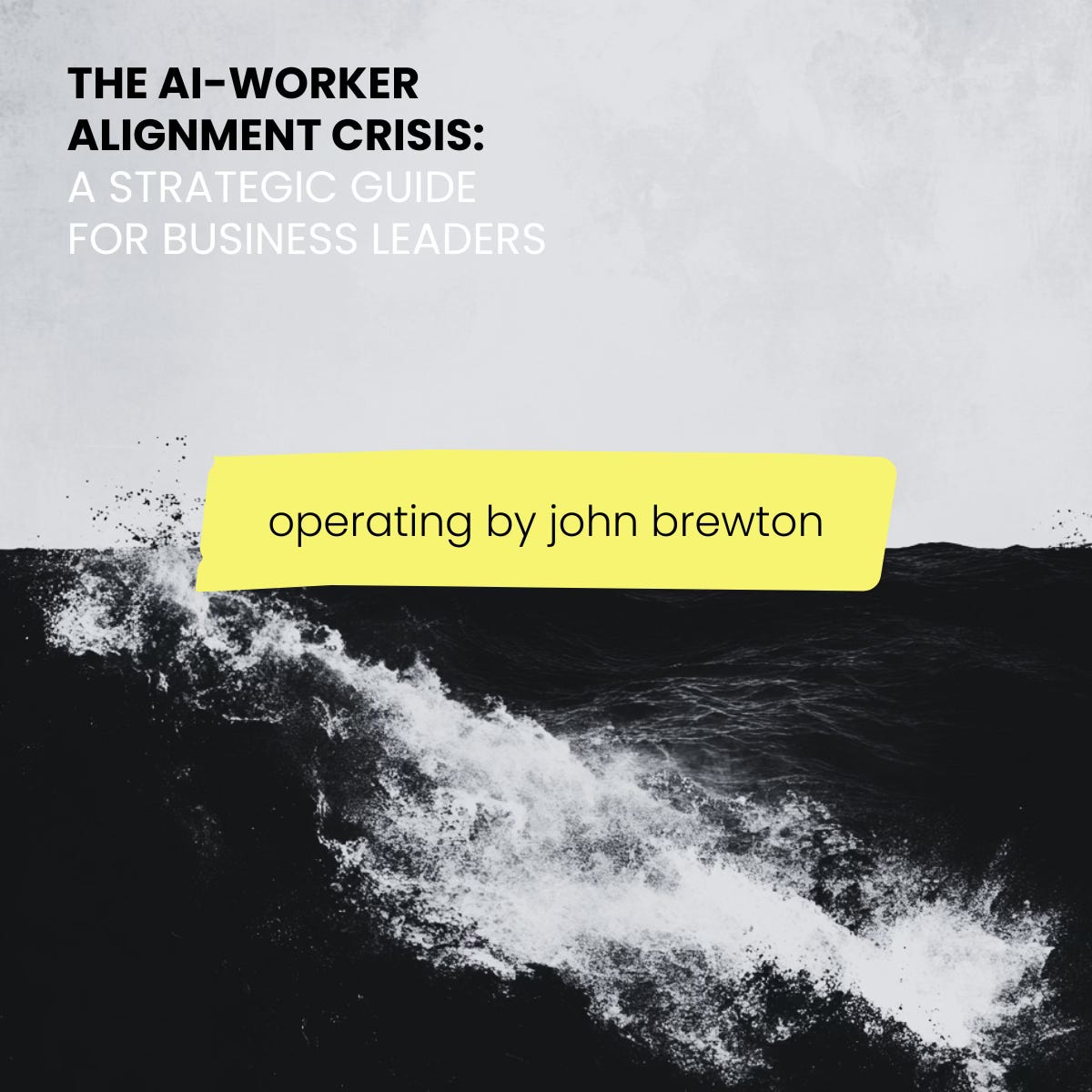The AI-Worker Alignment Crisis: A Strategic Guide for Business Leaders
Why Every CEO Needs to Read Stanford's Groundbreaking WORKBank Study: A comprehensive analysis of the largest empirical study on worker preferences for AI automation & what it means for your business
Dear Operating Community,
The AI revolution has arrived at your doorstep (no surprise here), but there's a critical factor that could determine whether your organization thrives or fails in this transformation: your workers' willingness to embrace it.
Stanford University's WORKBank study has just released the most comprehensive analysis ever conducted on worker preferences for AI automation. By surveying 1,500 workers across 104 occupations and analyzing 844 distinct tasks, researchers have uncovered a startling reality that should reshape how every business approaches AI implementation.
The headline finding? 34% of tasks that AI can technically automate face strong worker resistance, what researchers call the "Red Light Zone." Meanwhile, only 7% of tasks show perfect alignment between technological capability and worker acceptance.
This report synthesizes the study's findings into actionable intelligence for business operators, providing you with the strategic framework needed to navigate this complex landscape successfully.
The Four Zones That Will Define Your AI Strategy
Stanford researchers have identified four critical deployment zones based on the intersection of worker desires and AI capabilities:
Keep reading with a 7-day free trial
Subscribe to Operating by John Brewton to keep reading this post and get 7 days of free access to the full post archives.






